Amy Sue Nathan's Blog: Women's Fiction Writers, page 29
September 22, 2014
Guest Post: What If You Couldn’t Judge A Book By Its Cover?
If these were the books in front of you, which one would you choose? Uh — you’d have to read a few pages or the back cover copy if there was any. What happens when you can’t judge a book by its cover? Because you know we all do. Today Carole Howard tells us her own cover story and about covers old and new.
Please share some of your favorite covers in the comments!
Amy xo
A Plain Ol’ Cover Story
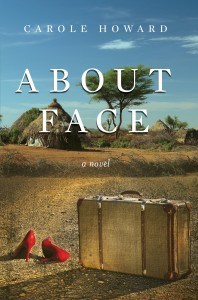 In a recent nightmare, I was wandering around a bookstore. I wanted to get some idea of the kind of covers I’m drawn to, since I was going to be working with a designer on the cover of my upcoming Best Seller. (I said it was a dream, didn’t I?) Plus I wanted a couple of books for summer reading.
In a recent nightmare, I was wandering around a bookstore. I wanted to get some idea of the kind of covers I’m drawn to, since I was going to be working with a designer on the cover of my upcoming Best Seller. (I said it was a dream, didn’t I?) Plus I wanted a couple of books for summer reading.
I wandered over to the “Staff Picks” table because that’s where I’d found some treasures in the past, probably because the owner/staff were women and we seemed to have similar tastes. But…..wait a second! All the books looked the same.
There must have been 60 or so books on that table, some old favorites like “Bel Canto” and “The Color Purple,” and some unknown nuggets. They all had cream colored covers with black Times Roman titles and authors. No pictures, no colors, nothing to indicate genre. Talk about a blank slate!
Time to wake up and be glad it was a dream.
And yet, in France, covers used to be just that way. Cream covers. Simple titles, though not always black, not always Times Roman. Elegant. Luscious, even. And while most of their covers are now just like the ones we’re used to, a French friend told me those old-fashioned plain-vanilla covers are coming back. Curious, that.
I don’t think the authors would want it that way. Don’t you want the cover of your book to lure potential readers like the smell of chocolate chip cookies baking in the next room? That’s what I want, to invite potential readers in by giving them some idea of what they’ll find.
I can only imagine the publishers (or the Academie Francaise, the on-high guardians of everything French) thought it was a way to discourage readers from judging a book by its cover. It’s a worthy goal, I guess, like school uniforms preventing kids from judging others by their clothes.
Mais, non, I say to the Academie. It’s not about judging a book by its cover. It’s about
persuading someone to take your book off the shelf, knowing from the cover that it’s about someone just like her, flip through it a bit before deciding whether to take it home to read. Then she can judge it.
It’s not surprising that I dreamed about book covers, since I was in the throes of re-designing the cover of my first novel, ABOUT FACE. The original cover was beautiful, stark, dramatic. But it didn’t give the reader enough of an idea of what she’d find. I wanted the cover to show some of the story, a bit of the atmosphere. Working with a designer was an intense exercise in deciding exactly what part of the story I wanted to portray. (Thank goodness it wasn’t not my job to figure out how to portray it.)
In a previous life, I taught business writing. If someone’s thoughts needed clarifying because their writing was contorted, confused, and complicated, I’d ask: “If you had to boil your message down to one sentence, what would it be?” The question often resulted in a whole lotta squirming; working with the book designer felt like those students’ revenge.
“Well, there’s the whole ‘doing well vs doing good’ aspect of the story.”
“Or, wait, it’s also about the power of women’s friendships.”
“How about middle-aged identity crises?”
“Got it: Corporate executive on the outside, Peace Corps Volunteer hollering to get out. Yes, that’s it.”
While it would have made my life oh-so-much easier if my cover were the default cream color with elegant title and author, in the end, I wouldn’t have been satisfied. I wanted my cover to say to browsers, like kids at a swimming pool to their mothers, “Look at me, look at me, look at me.” And, of course, “Buy me, read me.”
So, do you?
Read more about Carole and her books on her website.








September 17, 2014
Guest Post: How One Author Struggled With Body Image And Wrote A Novel
 We often get so caught up in getting published, being published, finding an agent, promoting ourselves and our books, that sometimes we forget WHY we read and write what many call women’s fiction. It’s because that along with the relatable characters and real life situations — are some really serious issues. Today, Mary Rowen shares with us her own story of bulimia and how body image plays into real life and fiction. Mary is both eloquent and brave, and I hope you’ll chime in with your own body image experience in the comments and how it has impacted your writing.
We often get so caught up in getting published, being published, finding an agent, promoting ourselves and our books, that sometimes we forget WHY we read and write what many call women’s fiction. It’s because that along with the relatable characters and real life situations — are some really serious issues. Today, Mary Rowen shares with us her own story of bulimia and how body image plays into real life and fiction. Mary is both eloquent and brave, and I hope you’ll chime in with your own body image experience in the comments and how it has impacted your writing.
Please welcome Mary to WFW!
Amy xo
How Mary Rowen Struggled With Body Image And Wrote A Novel
by Mary Rowen
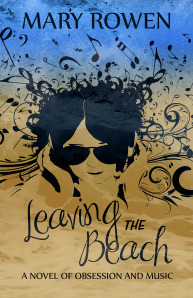 Body image. If that’s not a loaded term for women, I don’t know what is. I’d be willing to bet that the earliest human women noticed what the men in their tribes liked, and tried to make their bodies more attractive for them. But I wonder if there was a little bit more to that than the basic human need to reproduce. I’m guessing that even women who lived in caves appreciated being told—perhaps with grunts, or nods, or some early language—that they looked nice. Because let’s face it: it feels good to know you look pretty and desirable.
Body image. If that’s not a loaded term for women, I don’t know what is. I’d be willing to bet that the earliest human women noticed what the men in their tribes liked, and tried to make their bodies more attractive for them. But I wonder if there was a little bit more to that than the basic human need to reproduce. I’m guessing that even women who lived in caves appreciated being told—perhaps with grunts, or nods, or some early language—that they looked nice. Because let’s face it: it feels good to know you look pretty and desirable.
Evidence of this can be seen in almost all cultures throughout history, as women’s clothing and accessories frequently accentuate our breasts and other parts of our bodies we find most sensual. This often involves pain and personal sacrifice too, as few people would consider corsets, underwire bras, or stiletto heels comfortable. Some women go so far as to have surgery—literally risking their lives to “improve” their bodies—but even those who draw the line at shopping for flattering clothes and/or makeup will tell you that those things are time consuming and expensive.
Of course, it’s not all about attracting men. Many of us dress to attract other women—or just to make ourselves happy—and many no longer see reproduction as a goal. But the majority of women—despite our age—still seek out the approval of others when it comes to appearance.
Now some readers might jump up and scream, “But men seek approval too!” And yes, that’s true. Most men do want to look good, but in most cases, their desire isn’t as extreme as it is with most women. My husband, for example—a software engineer—looks great every time he heads out to work, but as far as I know, he only looks in the mirror while shaving, and perhaps when he runs a comb through his hair. He has a bunch of similar-looking clothing that fits well—chinos, jeans, button-down shirts—and he wears a clean top and bottom every day. Clean is important. But that’s about it for him. His body image is healthy enough to allow him to put on his clothes and go. And based on my observations of his peer group, that’s pretty much the standard. But I—and most of my professional female peers—spend far more time choosing outfits, blow-drying my hair, putting on makeup, and figuring out which shoes look best. I don’t obsess—and as a recovered bulimic, I know all about obsession—but I do check the mirror several times before leaving the house. Not doing so would be quite difficult for me.
But the one thing I don’t ever do—and I mean never—is ask anyone in my household if my clothing makes me look fat. That’s a gift I hope I can pass on to my daughter, who’s a young teenager. Because back when I was about fifteen, I decided—for some crazy reason—that I’d be more attractive if I dropped a few pounds. Therefore, when I read a magazine article warning about the dangers of anorexia and bulimia, I found it more instructional than frightening. I pored over the article—and the other pictures in the magazine—and something in my head clicked. Prettiness, I decided, resulted in happiness, and the only way to be pretty was to be thin. It was a screwed up equation for sure. But for the next fifteen years or so, I believed in—and lived by—that equation with a sick, almost religious fervor. During those years, I attempted to vomit almost everything I ate, and often felt confused, weak, and dizzy. My confidence level hit rock bottom, and I was hardly ever happy.
Sound familiar? Unfortunately, if you’re a woman reading this, it probably does. A few months ago, I published a blog post about my eating disorder, and got tons of feedback from women who told me they’d been through a similar hell. Or, if not them, then a family member, a close friend, or a work associate.
So now, every time I start thinking about my weight, I remind myself that it doesn’t matter. Of course it’s not healthy to be obese—everyone knows obesity’s bad—but that’s not what I’m talking about here. What I’m talking about is gaining a few pounds here and there, or going up a size in jeans. Or eating something truly decadent and delicious without trying to cut back on calories for the next few days, or doing extra exercise. Because again, in the scheme of things, a few extra pounds aren’t important. The energy expended on stress and extra exercise can be put to much better use.
I could conclude by saying something like, “Hey, a lot of people prefer a heavier partner anyway.” But that’s not the point. A woman’s body is hers. We’re not here on earth to be eye candy, or playthings. Our bodies have so many functions: transporting us across this magnificent planet, tasting, dancing, listening to music, making music, helping us create the things we imagine, bearing us children if we so choose—and sometimes nourishing those children—providing sexual pleasure, rocking terrific outfits, and much, much more. So yes, I believe we should eat well most of the time and try to stay healthy so that we can make the most of our lives, but thinness does not lead to happiness. The only real road to happiness is being OK with who you are. And while it’s fine to like the way you look, obsessing over appearance always leads to frustration and worse.
I’ve written a novel called Leaving the Beach in which the main character, Erin Reardon, is a bulimic woman who’s also obsessed with rock stars. It’s all fiction, and I hope readers enjoy the story. But I also hope it sheds some light on the ways eating disorders affect people. Most importantly, I hope Leaving the Beach will encourage people suffering from EDs to seek professional help. I really do believe that’s the only way to truly recover.
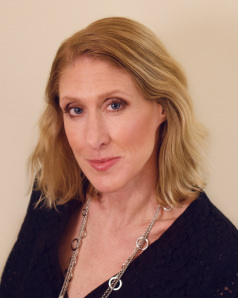 Mary Rowen is a Boston area mom with a wonderful family that allows her time to write almost every day. Leaving the Beach, although pure fiction, certainly draws on some personal experience. As the tagline states, it’s “a novel of obsession and music,” and rock music has always been a driving force in Rowen’s life. She was also bulimic for over fifteen years, and really wanted to write a story with a bulimic main character. Eating disorders are so complicated—and dangerous—and she hopes Leaving the Beach might encourage people suffering from them to seek help. Visit Mary at: http://maryrowen.com/
Mary Rowen is a Boston area mom with a wonderful family that allows her time to write almost every day. Leaving the Beach, although pure fiction, certainly draws on some personal experience. As the tagline states, it’s “a novel of obsession and music,” and rock music has always been a driving force in Rowen’s life. She was also bulimic for over fifteen years, and really wanted to write a story with a bulimic main character. Eating disorders are so complicated—and dangerous—and she hopes Leaving the Beach might encourage people suffering from them to seek help. Visit Mary at: http://maryrowen.com/
About LEAVING THE BEACH
Written with heart and keen observation about the day-to-day struggles of a “functioning bulimic,”Leaving the Beach explores the power of fantasy, then shoves it up against harsh reality until something has to give. In this women’s novel set on the sandy beaches of Winthrop, Massachusetts, we meet Erin Reardon, a lonely person who believes her destiny is to save grunge superstar Lenny Weir. Forget the fact that Lenny reportedly killed himself several years earlier; Erin’s not the only fan to believe his death was a hoax, a last-ditch effort by the drug-addled musician to reclaim his privacy. And Erin has felt a special bond with Lenny for years. So when she gets picked up hitchhiking by a mysterious man who resembles Lenny physically, she makes some quick assumptions. After all, he has extensive knowledge of the music industry, there’s a guitar in his trunk, and he has issues with drugs. She’s finally about to fulfill her destiny…
You can find LEAVING THE BEACH at iTunes, BN, and Amazon.








September 4, 2014
Guest Post: Rona Simmons Takes Apart Some Popular Stories And Puts Them Back Together
 Who knew that the summer I went all DIY at home (the crafting and home improvement gods have possessed me) that the first guest post of fall would be about dismantling a story and putting it back together? There is something very satisfying in doing a project yourself, figuring it out, making sense of it all.
And that’s just what Rona Simmons shares with us below—and she’s doing it with works of women’s fiction. Lucky us!
Who knew that the summer I went all DIY at home (the crafting and home improvement gods have possessed me) that the first guest post of fall would be about dismantling a story and putting it back together? There is something very satisfying in doing a project yourself, figuring it out, making sense of it all.
And that’s just what Rona Simmons shares with us below—and she’s doing it with works of women’s fiction. Lucky us!
As for me, it’s time to paint another piece of furniture or maybe get back to my list of fifty things to make with pumpkin…or, oh right, there’s a WIP I’m writing as I wait for my second round of edits on novel two! (It’s busy here in the empty nest, I tell you.)
Please welcome Rona to Women’s Fiction Writers and share your thoughts in the comments!
Amy xo
Taking Apart Stories—And Putting Them Back Together
by Rona Simmons
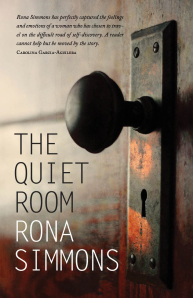 I take things apart. I always have. Once, I took a clock apart to see how it worked and later, a vacuum cleaner to fix what was broken. I failed on both accounts, but my drive to see the inner workings of objects persisted. Today, I apply it to the world of writing. I want to understand how the magic happens: how an author hooks a reader on the very first page.
I take things apart. I always have. Once, I took a clock apart to see how it worked and later, a vacuum cleaner to fix what was broken. I failed on both accounts, but my drive to see the inner workings of objects persisted. Today, I apply it to the world of writing. I want to understand how the magic happens: how an author hooks a reader on the very first page.
So, with a pliers in one hand and a screwdriver in the other, I selected five works of general or women’s fiction from the top of the 2013 New York Times bestseller list. I bypassed cover art, book blurbs, and introductory quotes, to focus on the authors’ own words, ones that would snare a reader from the start and keep them reading for the next several hundred pages.
My small sample included what I’ll call a “beach read”, a “hot topic” book on drug addiction, a “page-lingerer” chock full of lush writing and internal musings, a tale “based on true events”, and a story that explores relationships and secrets.
I read only the first sentences and paragraphs–up to 150 words, skipping prologues just as some readers might.
The opening sentences of the five novels were as different as night and day:
The Goldfinch, Donna Tartt: “While I was still in Amsterdam, I dreamed about my mother for the first time in years.”
The Husband’s Secret, Lianne Moriarity: “It was all because of the Berlin Wall.”
The Orphan Train, Christina Baker Kline: “Through her bedroom wall Molly can hear her foster parents talking about her in the living room, just beyond her door.”
The Girls of August, Anne Rivers Siddons: “The girls of August had decided, given our long hiatus and the introduction of a new person–Baby Gaillard nee LucyAnne Gaillard, to be exact–that we best meet ahead of time at my house to map out our strategy and make sure we all felt OK about Tiger Island.”
All Fall Down, Jennifer Weiner: “Do you generally use alcohol or drugs more than once a week?”
The authors’ writing styles were equally diverse. The openings ranged from dense, descriptive exposition (49 words per sentence and a reading level of 15) to short staccato sentences filled with internal dialogue (14 words per sentence and a reading level of 6). Three were in third person and two in first.
On the other hand, the openings occurred in remarkably similar situations: a woman alone, worrying. In fact, a lot of worrying took place in those first sentences. The women faced threats of unknown origin and specificity and, presumably, would confront their demons in the pages ahead.
The Goldfinch: A woman alone in her hotel room dreams of her dead mother. There are fearful sounds outside her hotel room. She is afraid.
The Husband’s Secret: A woman alone at her kitchen table stares at a sealed envelope, addressed in a familiar hand. And then there’s the elephant in the room, the Berlin Wall.
The Orphan Train: A young woman alone in her bedroom eavesdrops on her foster parents who discuss their worries and their suspicions about their foster child.
The Girls of August: A woman will meet a group of friends after a long hiatus. She worries about the upcoming event and worries about worrying.
All Fall Down: A woman reads about alcohol abuse and wonders if her own addiction is worse than she admits and could wreak havoc on her family and young daughter.
All five authors exposed the reader to the narrator’s inner thoughts and feelings, their “sixth sense” for lack of a better term. The Goldfinch was the best example: with “innocent” noises outside the door, the reader looks for threatening noises nearby, a bell “tolling” the hour with “a dark edge to the clangor”. I was surprised to find little discussion of the other five senses in the early passages.
Though not snared by the first sentence, after I’d read 150 words or so, I committed to read at least one of the books. Why? And, why would so many other readers invest in these stories?
The answer, I believe, is the presence of strong emotions, the sixth sense, in a tension-packed situation, the details of which are reserved for the later pages.
Will this finding change my writing?
The answer, of course, is maybe. I write my way. I write what I like to read and I hope that it has broad enough appeal to be enjoyed by others, many others–New York Times bestseller list or not. But I will seek more opportunities for my protagonists to express their fears and hopes in my own first pages.
Now, excuse me, I need to sit at my kitchen table, take something else apart, and worry.
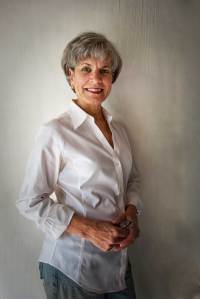 Rona Simmons was born in Santa Monica, California. She’s the daughter of a WWII fighter pilot and later career military officer and moved with her family from state to state and country to country, living in 25 different places by the time she graduated from high school. So she’s still astonished that she’s spent the last twenty years in any one place.
Rona Simmons was born in Santa Monica, California. She’s the daughter of a WWII fighter pilot and later career military officer and moved with her family from state to state and country to country, living in 25 different places by the time she graduated from high school. So she’s still astonished that she’s spent the last twenty years in any one place.
Three years ago, she launched her second career using the writing, analysis, and research skills she’d acquired during her thirty-year career in corporate America. Since then she has written several articles for magazines, a novel, and a collection of short stories and was the ghostwriter for the biography of a prominent Atlanta businessman.
Rona’s latest novel, The Quiet Room, was published by Deeds Publishing, an Atlanta-based publishing company. Though this novel is set in the Midwest, and the one she’s working on now in New England, she considers herself a southern writer, drawing inspiration from the wooded acres where she lives with her husband and (she swears) the last member of a passel of cats.
website: http://www.ronasimmons.com
blog: womenatword.wordpress.com
facebook: http://www.facebook.com/pages/Rona-Simmons-Writer-and-Author
Twitter: twitter.com/rona_simmons
Pinterest: pinterest.com/rdsimmons
Rona’s books are available through her website or: Amazon, Deeds Publishing, Barnes & Noble, and other book retailers








September 1, 2014
Author Interview: Lorrie Thomson Plays The What-If Game, And Doesn’t Believe In the Sophomore Curse
Happy September! I don’t know if you realized, but we here at Women’s Fiction Writers (oh, who am I kidding, it’s only me) took the month of August OFF from blogging. I’ve been blogging since 2006—so I thought it was time for a little summer slow-down, at least when it came to the blogosphere.
But…here we go again! And with gusto! I have amazing authors to share with you as we head into the last months of 2014, as well as great tips, and information, and some exciting stories of my own. Keep checking in. You won’t be sorry.
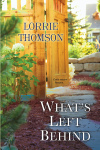 We’re kicking off Fall (September = Fall) with Lorrie Thomson and the release of her second novel, WHAT’S LEFT BEHIND. I had the pleasure and honor of reading this book a while back and offering an endorsement (blurb):
We’re kicking off Fall (September = Fall) with Lorrie Thomson and the release of her second novel, WHAT’S LEFT BEHIND. I had the pleasure and honor of reading this book a while back and offering an endorsement (blurb):
“Still reeling from the sudden death of her son, Luke, innkeeper Abby Stone meets Rob, and then Tessa, two people who make Abby examine her life and her future. Abby also grapples with the lure of her first love, Charlie, and the lore surrounding a father she’s never known. WHAT’S LEFT BEHIND is an emotionally satisfying blend of heartache, hope, and happiness.”
Not only does Lorrie write classic women’s fiction, she’s a great supporter of other women’s fiction authors. Lorrie was the first person (and I don’t know if she knows this) to send me a photo of THE GLASS WIVES out in the wild when it was released in May 2013! Can’t ask for more than that!
Below, Lorrie shares with us some insights, her process, and a little about what’s next.
Please welcome Lorrie Thomson back to WFW!
Amy xo
Author Lorrie Thomson Plays The What-If Game, And Doesn’t Believe In the Sophomore Curse
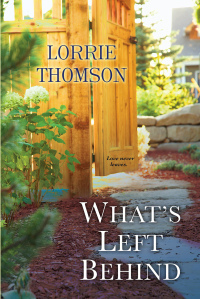 Amy: Welcome back to Women’s Fiction Writers, Lorrie, and congratulations on your second novel, WHAT’S LEFT BEHIND. Before we get into the specifics of your main character, Abby, and the wonderful story you’ve told, can you tell us if “the sophomore curse” was true for you? What was it like writing your second novel as opposed to your first?
Amy: Welcome back to Women’s Fiction Writers, Lorrie, and congratulations on your second novel, WHAT’S LEFT BEHIND. Before we get into the specifics of your main character, Abby, and the wonderful story you’ve told, can you tell us if “the sophomore curse” was true for you? What was it like writing your second novel as opposed to your first?
Lorrie: Thanks so much for inviting me back! I’m delighted to be here, discussing WHAT’S LEFT BEHIND.
Knock on wood, I don’t believe in “the sophomore curse.” In some ways, writing the second novel was easier. Now, before you race to your fridge for a carton of eggs to lob at your monitor—never a good idea, notice that I said easier, not easy. I wrote and revised my debut off-and-on for about eight years. Each time I added a layer, I had to go back to that story place and reacquaint myself with the characters.
I had a year and a half to write WHAT’S LEFT BEIND, no time to lose sight of the story. And the characters never left my side.
Amy: Now, onto the story. Abby suffers a great loss, the death of her eighteen year old son. How did you decide this was the loss—or the inciting incident—of the story?
Lorrie: When plotting my novels, some things never change.
I played the what-if game, and challenged myself to arrive at one, or more, of my greatest fears. What if a single mom tragically lost her only child? What if, months later, that son’s pregnant girlfriend landed on the mom’s doorstep? What if the grieving mom had to, once-again, face the challenge of raising a child on her own?
Worse, what if she never got the chance?
Amy: On a lighter note, Abby runs a B&B (and it runs her life too). Tell us how you came up with this setting (my WIP is set at an inn, though much different than yours) and if you had to do any “research” to get all the details right. ;-)
Lorrie: Each summer, when my three children were small, my husband and I would bring them to Hermit Island in Phippsburg, Maine for camping adventures. And each year, we’d drive by EdgeWater Farm Bed and Breakfast, a sprawling old New Englander, with extensive perennial gardens.
I set the novel in a Casco Bay, Maine B&B, because I’ve an affinity for old houses and rural seashore settings, and an interest in hospitality. Of equal importance to the story, Abby’s vocation poses a challenge to her healing. How can she properly care for herself, when her job requires that she put her grief aside and care for others?
As soon as I came up with the B&B setting, I had to book a room at the EdgeWater Farm B&B, and I asked innkeeper Carol Emerson whether I could interview her for the inside scoop. Carol ran me through her daily drill and shared the trials and joys of running a bed-and-breakfast. Candid talks, comfortable accommodations, and delicious breakfasts. Research is such hard, and tasty, work!
Amy: I hope you don’t wince when you read this question, but how do you write your novels? Some authors outline, some don’t. Some authors write every day and adhere to a word count. Some don’t. The only thing that is certain, to me, is that this is no one way to write a novel. So, what’s the Lorrie way?
Lorrie: I agree with your assertion that there’s no one way to write novel!
I write anywhere from five to seven days a week, depending where I am in the process. As I near–as in race—toward a deadline, I increase the number of writing days and the word count. At the start of a novel, I might write 1,000 words a day, but by those last chapters, I’m going for a solid 1,750, approximately seven pages.
Each novel I write starts out with a synopsis, a ten-ish page story roadmap. Then the real fun begins. For every scene, I handwrite notes, copy those notes down in a Word doc, so I can actually read them, and let the imagination flow. One of my favorite parts of the writing process is discovering scenes not imagined in the synopsis. Another favorite? Unveiling the characters’ inner workings.
Amy: Can you share with us if you’re working on a new novel or what is next for you?
Lorrie: Thank you for asking! Yes, I’m currently racing—writing—toward my deadline.
In a MEASURE OF HAPPINESS, small-town bakery owner Katherine Lamontagne has spent twenty-four years dishing out cakes and comfort and keeping the secret of the son she gave away to herself, until her son comes looking for her, making her reconsider her past and challenging the meaning of family.
The story takes place in Hidden Harbor, Maine, the same fictional town where I set WHAT’S LEFT BEHIND. Although not a prequel per se, the story unfolds in 1999, and contains connected characters Abby, Charlie, and Luke. Most prominently, I take you into the heart and mind of Abby’s best friend, Celeste Barnes.
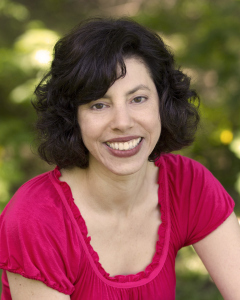 Lorrie Thomson lives in New Hampshire with her husband and the youngest of their three children. When she’s not reading, writing, or hunting for collectibles, her family lets her tag along for camping adventures, daylong paddles, and hikes up 4,000 footers.
Lorrie Thomson lives in New Hampshire with her husband and the youngest of their three children. When she’s not reading, writing, or hunting for collectibles, her family lets her tag along for camping adventures, daylong paddles, and hikes up 4,000 footers.
Visit Lorrie at her website. Connect with her on Twitter and Facebook. WHAT’S LEFT BEHIND is available at many brick and mortar stores, and on-line sites, including: BN, IndieBound, and Amazon.








July 30, 2014
Guest Post: Ten Lessons I’ve Learned Being A Writer by Colette Freedman
 I really enjoy finding out what works well for other writers. Sometimes a tip hits home and I give it a try. Other times I wish I could follow suit because something seems smart. Other times I know myself well enough to know that something won’t work for me (like mandatory daily writing).
I really enjoy finding out what works well for other writers. Sometimes a tip hits home and I give it a try. Other times I wish I could follow suit because something seems smart. Other times I know myself well enough to know that something won’t work for me (like mandatory daily writing).
Below, author Colette Freedman shares her writer life lessons with us. I think numbers two and three are my favorite, I wish I could do number seven, and believe strongly in number eight.
What about you?
Please tell us in the comments — and please welcome Colette Freedman to Women’s Fiction Writers!
Amy xo
Ten Lessons I’ve Learned Being A Writer
by Colette Freedman
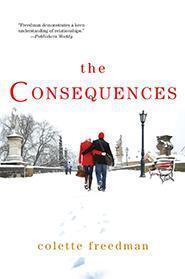 When I started writing, I had very few guides. This was long before the days of cell phones as an extra appendage (guilty), rhymezone.com (a must when writing song lyrics) and the luxury of research at one’s fingerips and informative blogs beyond one’s wildest imagination. I just had the basics: libraries, parental advice, teachers’ thoughts, a lot of television watching and my own instincts. The following list is one which has taken me several years to perfect. Some of them, like numbers one and six may seem obvious, even though they involve the discipline we need as writers. Numbers five and seven are less obvious, but equally as important. In fact, each of the ten lessons I’ve learned has helped me to become a better writer and most of the list has come about by my own personal flaws of making mistakes and “doing the opposite”…ie refusing to vacation for fear of missing out, saying “yes” far too many times, and drowning in self doubt. As you pursue your craft, no many what your genre or platform, I hope that my lessons, learned from my personal mistakes, will help!
When I started writing, I had very few guides. This was long before the days of cell phones as an extra appendage (guilty), rhymezone.com (a must when writing song lyrics) and the luxury of research at one’s fingerips and informative blogs beyond one’s wildest imagination. I just had the basics: libraries, parental advice, teachers’ thoughts, a lot of television watching and my own instincts. The following list is one which has taken me several years to perfect. Some of them, like numbers one and six may seem obvious, even though they involve the discipline we need as writers. Numbers five and seven are less obvious, but equally as important. In fact, each of the ten lessons I’ve learned has helped me to become a better writer and most of the list has come about by my own personal flaws of making mistakes and “doing the opposite”…ie refusing to vacation for fear of missing out, saying “yes” far too many times, and drowning in self doubt. As you pursue your craft, no many what your genre or platform, I hope that my lessons, learned from my personal mistakes, will help!
1. Write Every Day.
Writing often starts as a hobby. You do it whenever you want; maybe weeks go by between sentences. Writers write. They do it every day. Even if you work at Starbucks or in a law firm or in an advertising agency or as a lacrosse coach and write in the evenings and at weekends, you have to treat writing as a job. I worked in all of the above jobs (and many more). These ‘paying jobs’ took up most of my day and I was often exhausted when I got home and just wanted to turn on the tv and lose myself in a sitcom. But I still had another job to do. Writing is work and it takes work to actualize an idea into a fleshed out reality. If you believe you are a professional author and have the discipline of one, eventually you will become one (it happened to me!).
2. Say no.
Say it immediately and be definitive.
It’s both the easiest and the hardest one on the list. Life is full of wonderful opportunities and fabulous entertainment. But it is all a distraction. As a writer, you need to pick and choose what is more important to you – an evening writing, or a night at the movies. If you are not answering writing more than 50% of the time, you’re not really a writer.
3. Don’t be afraid to collaborate.
I like to work in three mediums: novels, plays and films. I’ve both written alone and I’ve collaborated in all three mediums and I absolutely love collaboration. When it works well, it is wonderful, although if you having a falling out with your partner, then it can be tricky. The “baby” that you have created will link you and your partner together indefinitely. But let’s focus on the upsides, and there are many. The biggest upside is that you will have someone willing to go on the same adventure with you.
4. Get a comfortable chair.
I’ve written on everything from high back kitchen chairs to bean bag chairs…and I have a bad back to prove it. When I was working in advertising, my boss bought me an Aeron Herman Miller and it made all the difference. It’s ergonomic and I am able to focus more on the words on the computer than the aches and pains in my back. And if you are going to sit for hours at a stretch, remember: proper posture! Which leads me very neatly to…
5. Stretch.
Working for hours on end is taxing on the body and eyes…. no matter how old you are. Stretch, take a walk, get a snack but get up every once and a while to move the blood around in your body. Why do you think so many authors have dogs? They force us to get up every few hours. (I speak now from experience; I have two greyhounds who love to walk and are always able to help me out on this one.)
6. Read.
I’ve said it in every interview. To write well, one needs to read well. Read voraciously in genres which interest you and explore ones that don’t. Read. “What are you reading?” is always the first question I ask people who tell me they are/about to be/are writers. You’d be astonished you say, “Oh, I don’t have time to read.” I lose interest right at that point.
7. Vacation.
Ultimately, much of your writing life is going to be spent sitting in a room staring at a screen. That’s a quick way to go stale. You need to take a break (This is an expanded version of item 5). Pretty much every good idea that’s ever come to me occurred when I’ve been on vacation. And I don’t mean Italy or France (though those are terrific sources of inspiration), but Boston, Napa, Vegas, sunset Blvd – pretty much anywhere other than in your office, staring at a screen. When you are thrust in a new environment, it does something to the creative juices to get them swimming. And of course, the part B of this, is to make sure that if a new idea comes to you that you have the tools to capture it. There are lots of note taking options on phones and iPad, but I find that an old fashioned notebook, pen or pencil works just fine!
8. Pursue your passions and engage.
I love musicals and I’ll go to any show I can. (I’m even writing one right now in collaboration with an amazing partner. (see Collaborating, #2). If you love music or dance or art or politics or sports, enjoy them. Watch them. Participate in them. It fulfills you not only as a person but as an artist.
9. Get a mentor.
And what is a mentor? It can be someone who has done what you are trying to do. It can be a teacher or a friend or someone who is already successful. It it can be a writing group – who encourages and supports you in your own efforts. You probably don’t even have to seek one out as they’ve been there the entire time. (And yes, I have been lucky to have several mentors and advisors.)
10. Believe in yourself.
As you start out on your writing career, you will find scores of people who will tell you that you are wasting your time. Ignore these naysayers. Confidence is the most important trait you can have in writing. This is a lonely field and there will be many times when you will find yourself riddled with self-doubt. But you press on. The rejections will come fast and furious (for every novel, play and screenplay I’ve had produced, I have had at least a dozen rejections). You must believe in yourself fully before other people can believe in you.
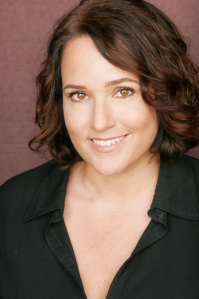 Colette Freedman is an internationally produced playwright with over 25 produced plays, Colette was voted “One of 50 to Watch” by The Dramatist’s Guild.
Colette Freedman is an internationally produced playwright with over 25 produced plays, Colette was voted “One of 50 to Watch” by The Dramatist’s Guild.
Her play Sister Cities was the hit of the 2008 Edinburgh Fringe and earned five star reviews: It has been produced around the country and internationally, fourteen times including Paris (Une Ville, Une Soeur) and Rome (Le Quattro Sorelle). The film version has been optioned and is in pre production.
She has co-written, with International bestselling novelistJackie Collins, the play Jackie Collins Hollywood Lies, which is gearing up for a National Tour. In collaboration with The New York Times best selling author Michael Scott, she wrote the thriller The Thirteen Hallows (Tor/Macmillan).
Her novel The Affair (Kensington) came out January 29, 2013. The play of the novel earned both critical and commercial success as it toured Italy February through May 2013.
Her novel The Consequences (Kensington) was released on January 28, 2014
http://www.colettefreedman.com
Twitter: twitter.com/ColetteFreedman
Pinterest: pinterest.com/colettefreedman
You can find out more about Colette’s books here:
Barnes & Noble: http://bit.ly/19Rc1zO
Good Reads: http://bit.ly/1ehlamu
Amazon: http://amzn.to/1dRPDpF








July 23, 2014
Author Interview: Lindsey Palmer Says To Write About A Passion, Or Better Yet, An Obsession
 I know you’re going to love today’s interview with Lindsey Palmer, who brings up something very important: if your book bores you while you’re writing it, STOP! Because then it’s likely to bore someone else. I will add that once you’ve reviewed, revised, edited, and read your book twenty times, it’s okay to be bored and then you’re likely not the best arbiter of what’s boring and what’s not — but when a book is new and being written — follow Lindsey’s advice and write about what interests you most. What pulls you through three hundred pages is likely to also pull along the right reader!
I know you’re going to love today’s interview with Lindsey Palmer, who brings up something very important: if your book bores you while you’re writing it, STOP! Because then it’s likely to bore someone else. I will add that once you’ve reviewed, revised, edited, and read your book twenty times, it’s okay to be bored and then you’re likely not the best arbiter of what’s boring and what’s not — but when a book is new and being written — follow Lindsey’s advice and write about what interests you most. What pulls you through three hundred pages is likely to also pull along the right reader!
Please welcome Lindsey Palmer to Women’s Fiction Writers!
Amy xo
Author Lindsey Palmer Says To Write About A Passion, Or Better Yet, An Obsession
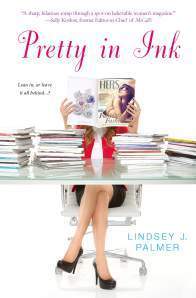 Amy: What has the best part been so far, now that you’re a published author? What has the most difficult part been? (I won’t say ‘worst’ but it’s not all easy, that’s for sure!)
Amy: What has the best part been so far, now that you’re a published author? What has the most difficult part been? (I won’t say ‘worst’ but it’s not all easy, that’s for sure!)
Lindsey: The best part is hearing from readers that a certain character or conflict or plot point really connects with them–it’s wonderful to learn that the things that preoccupy and interest me resonate with other people, too. That’s a dream come true.
A more difficult part has been a new sense of pressure. I always considered myself a writer, but before I published a novel, it was something I did in my own little quiet corner of a cafe, a personal project that only a few people close to me knew about. Now, although it’s a thrill to have others think of me as a writer, it’s still a shock when someone casually asks, “What are you writing now?” I bumble a bit, one, because I don’t think I’m especially good at talking about works-in-progress, and two, because something that used to feel private has become more public. I do realize this is a pretty nice problem to have.
Amy: Did you have a favorite scene in the book while you were writing—and can you tell us about it without any spoilers? I also know that some of my favorite scenes when I’m writing are the most difficult to write. Did you have a scene that “gave you trouble?”
Lindsey: One of my favorite parts to write was the chapter narrated from the intern’s point of view. An office intern has such a unique perspective because she’s at the company but not of the company–she’s got more than a visitor’s pass, but she’s temporary, too, trying out this career to see if it fits. She may be naive about a lot of the inner workings of the office, but the fact that she’s less entrenched affords her a totally fresh viewpoint, which from a writer’s perspective was fun to inhabit after taking on the points-of-view of so many longtime staffers. Also, one might say that the intern in Pretty in Ink has more of a heart than the other characters, and yet she also commits what is arguably the least ethical act of the novel. For these reasons, she was an interesting character to develop.
One scene that gave me trouble was when the managing editor goes out to drinks with the new editor-in-chief, Mimi. Mimi has been cast as a villain up until this point, but I wanted to find a way to make her empathetic, to complicate her character a bit. I started thinking about how, despite her position of power, a new boss would face her own difficulties, in Mimi’s case insecurity and loneliness. What better way to get them out in the open than to get the character a little drunk? It was a challenge to write, but a fun one.
Amy: How do you feel about the term ‘women’s fiction’ and having your novel categorized as one that would appeal mostly to women?
Lindsey: Well, since Pretty in Ink is about a cast of primarily women and an exploration of issues and struggles that are often unique to women, it makes perfect sense to me that the book would be categorized as “women’s fiction.” Does that necessarily mean that a man wouldn’t read it and find a character or situation that resonates or interests? I would hope not. Categorization can be helpful when it comes to connecting with readers who know they like a certain genre–I’m all for that. Categorization only becomes problematic when it’s seen as exclusionary, as in, This book is X type so it would only appeal to Y readers. But really, I’m like most writers in that the main goal is to get eyeballs in front of my work, so whatever means can help make that happen is okay by me.
Amy: What’s your best advice for aspiring authors of women’s fiction?
Lindsey: First, read a lot–you have to keep filling your brain with writing that sings in order to be able to craft your own powerful prose. Second, write about a passion or, even better, an obsession. Especially if your goal is to write a novel, you’re going to be living with those characters and that set of conflicts and issues for quite some time, and at least for me, the best way to keep motivated and interested is to be writing about something that presents endless enthrallment. If you get bored, your reader certainly will too. If you’re still fascinated by the end of the process, then hopefully readers will be too.
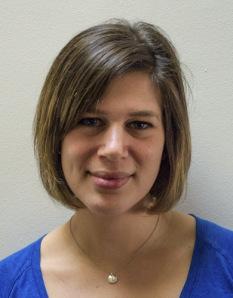 Lindsey J. Palmer worked as a professional writer and editor in the magazine industry for seven years, most recently as Features Editor at Self, and previously at Redbook and Glamour. A graduate of the University of Pennsylvania, she earned a Master of Arts in English Education from Teachers College, Columbia University, and currently teaches 12th grade English, A.P. Literature, and Creative Writing at NEST+m in Manhattan. Lindsey lives in Brooklyn. Visit her at http://www.lindseyjpalmer.com, http://facebook.com/lindseyjpalmerauthor, and @lindseyjpalmer.
Lindsey J. Palmer worked as a professional writer and editor in the magazine industry for seven years, most recently as Features Editor at Self, and previously at Redbook and Glamour. A graduate of the University of Pennsylvania, she earned a Master of Arts in English Education from Teachers College, Columbia University, and currently teaches 12th grade English, A.P. Literature, and Creative Writing at NEST+m in Manhattan. Lindsey lives in Brooklyn. Visit her at http://www.lindseyjpalmer.com, http://facebook.com/lindseyjpalmerauthor, and @lindseyjpalmer.








July 16, 2014
Author Interview: Dreams And Destiny Intertwine In Lydia Netzer’s Latest Novel
 I am so honored to have Lydia Netzer on WFW again. Lydia is one of the most courageous and creative novelists I know. She’s generous with her advice and her insights, and never fails to same something worth listening to—and repeating. I wanted this interview with Lydia to be a little different, just to do a mid-summer shake-up! Below, Lydia shares with us not only the the origin of her latest book, HOW TO TELL TOLEDO FROM THE NIGHT SKY, but how she involved dream research in the writing, and what it all means to her.
I am so honored to have Lydia Netzer on WFW again. Lydia is one of the most courageous and creative novelists I know. She’s generous with her advice and her insights, and never fails to same something worth listening to—and repeating. I wanted this interview with Lydia to be a little different, just to do a mid-summer shake-up! Below, Lydia shares with us not only the the origin of her latest book, HOW TO TELL TOLEDO FROM THE NIGHT SKY, but how she involved dream research in the writing, and what it all means to her.
Please welcome my dear friend Lydia Netzer to WFW!
Amy xo
Dreams And Destiny Intertwine In Lydia Netzer’s Latest Novel
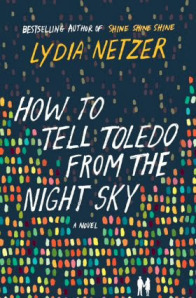 Amy: People seem to want to know where writers’ ideas come from. (I like to say mine come from Target.) But — what I want to know is what came first when you conceived How To Tell Toledo From The Night Sky — a character? a scene? the main idea?
Amy: People seem to want to know where writers’ ideas come from. (I like to say mine come from Target.) But — what I want to know is what came first when you conceived How To Tell Toledo From The Night Sky — a character? a scene? the main idea?
Lydia: Thirteen years ago, I was sitting with my friend Kristen in her mom’s living room, and we were watching our kids playing with blocks and they were so incredibly adorable. They were one at the time, so of course we had their entire lives planned out — they would grow up and fall in love and marry each other, so we could be their in-laws, and holidays and grandparenting would be so much fun! I think all mom friends have had that fantasy at some point. But as we sat there musing, and laughing about how we could raise them up separately to be perfect for each other (she’s west coast, I’m east coast), I just kept thinking how interesting a story it would make if someone really tried to do that for real. As I developed the idea into the plot of a novel, I had to ask a lot of questions — what would motivate a pair of friends to really do this to their kids, how would they go about it, and of course what could go horribly wrong? We are talking about a novel after all — so disaster is a requirement.
Amy: Where you were when the idea TOLEDO hit you over the head?
Lydia: One of the ideas for the book came to me in an airplane! I was flying in an airplane at night, and I was gazing down on the lights of towns and roads, headlights, like you do. I don’t remember what city exactly I was flying over when I realized that the lights of the cities below me, connected by roads, were like the lights of the stars above me, connected in constellations. It was sort of a weird moment, because I think a lot about Aristotle’s cosmology, the crystal spheres, and the scientifically outdated but still philosophically relevant idea that things in the heavens are perfect by definition and things on earth are messy and damaged. It’s one of the most important elements of the book, and it ended up inspiring a pivotal scene for my main character.
Another idea in the book is that sleep is like practice for death, and dreams are like practice for the afterlife. I don’t know when I started thinking about this, but the process of falling asleep has always kind of creeped me out. I think if aliens ever visit this planet, our habit of going into a dark room, flattening ourselves, shutting our eyes and completely losing control of our minds for eight hours might raise some alien eyebrows. It’s so odd to me that we know so little about such a huge part of our lives — what happens in dreams, and what is the transition between waking and sleeping? And that’s not even to mention the mystery of death, the transition between life and death, and what happens after. This novel is a love story, but it’s also an exploration of these ideas.
Amy: In Toledo, the characters “meet up” in dreams. What fascinates me is that Irene has control of her dream landscape. I know this is possible, at least to some extent, because in real life, it’s something I can do. What kind of research did you do on lucid dreaming to make the character’s experience real? And, do you experience lucid dreaming?
Lydia: I’ve been actively trying to control my dreams ever since I started working on that element of the novel. I researched different methods and ideas lucid dreaming. The main thing is being able to stay in your dream when you realize it’s a dream. Most people, as soon as they realize they’re dreaming, fall out of the dream and either wake up or move on to another dream. So that moment when you realize you’re dreaming is very important, and most theory on lucid dreaming focuses on that. For example, one theory is that you should count your fingers regularly throughout the day, or look at a clock with a dial, or open a book to a certain page. If you make this habitual, the theory is that you’ll find yourself doing it in a dream. But in the dream, you’ll see three fingers, or a blank dial, or an unfamiliar page, and you’ll know you’re dreaming.
From there the trick is to stay in the dream, take control, and not let your awareness slip away. This is hard for me, but I’ve been able to do it a few times in the last year. The first time we during one of those “I’m naked in public, crap!” dreams, and I realized I was dreaming, and was able to dream myself into clothes. Yes, it was a hideous gray unitard, but it covered me. The second time, I was reaching for a crate of lettuce in a farmer’s market, and I couldn’t reach it. Realizing I was dreaming, I made the crate come toward me.
At this point I almost gave up on the whole lucid dreaming thing, because after watching “Inception” I was frankly expecting a bit more from my subconscious than a levitating lettuce crate. I mean come on. Finally I was able to fly in a lucid dream, all except for my head, which dragged along the ground — typical! My characters meet in dreams, find answers in their dreams, and create their own realities. It’s almost like what writing a novel is for me — a way to work out questions in your imagination, to create a world that obeys your rules. Yet there’s always that element of lunacy in dreaming, that sense that you’re not in complete control. And that’s the magic of writing for me too — I’m always excited to see what will happen.
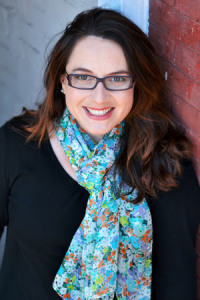 Lydia Netzer’s first novel, Shine Shine Shine, was a NYT Notable Book, a Target Book Club pick, and was a finalist for the LA Times Book Prize. Her new novel, How to Tell Toledo From the Night Sky, was just released on July 1. Entertainment Weekly calls it, “a lovely summer valentine.” She lives in Virginia with husband and two kids, and their dogs and horse.
Lydia Netzer’s first novel, Shine Shine Shine, was a NYT Notable Book, a Target Book Club pick, and was a finalist for the LA Times Book Prize. Her new novel, How to Tell Toledo From the Night Sky, was just released on July 1. Entertainment Weekly calls it, “a lovely summer valentine.” She lives in Virginia with husband and two kids, and their dogs and horse.








July 14, 2014
Author Interview: Ellen Sussman Says There’s More Than One Way To Write A Novel (Even For Her!)
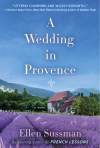 You know what they say, timing is everything! And what good timing it is for us to have Ellen Sussman on Women’s Fiction Writers today to celebrate the launch of her latest novel, A WEDDING IN PROVENCE. Ellen shares exceptional insight and advice with us, perhaps no words better suited to me than these: “Write the best damn book you can.” It seem obvious, but can become an oversight when we get wrapped up in other parts of being a writer and author. So, thanks, Ellen. Simple words are often the most meaningful. And the smartest.
You know what they say, timing is everything! And what good timing it is for us to have Ellen Sussman on Women’s Fiction Writers today to celebrate the launch of her latest novel, A WEDDING IN PROVENCE. Ellen shares exceptional insight and advice with us, perhaps no words better suited to me than these: “Write the best damn book you can.” It seem obvious, but can become an oversight when we get wrapped up in other parts of being a writer and author. So, thanks, Ellen. Simple words are often the most meaningful. And the smartest.
Please welcome Ellen Sussman back to Women’s Fiction Writers.
Amy xo
Ellen Sussman Says There’s More Than One Way To Write A Novel (Even For Her!)
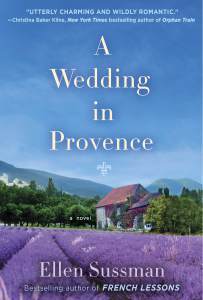 Amy: Welcome back to Women’s Fiction Writers, Ellen, and congratulations on your fourth novel, A WEDDING IN PROVENCE! Can you tell us what sparked the idea for this novel–and what came first–the characters, the setting, or the situation?
Amy: Welcome back to Women’s Fiction Writers, Ellen, and congratulations on your fourth novel, A WEDDING IN PROVENCE! Can you tell us what sparked the idea for this novel–and what came first–the characters, the setting, or the situation?
Ellen: My husband and I did get married in France! But, no, the novel is not autobiographical. In fact, nothing that happens in the novel happened during our wedding weekend! I did think that a small wedding, set in France, would be great material for a novel — full of family drama and relationship drama and travel drama. Once I had that idea I began to flesh out the characters. I wanted a second marriage because I’ve spent so much time over the years thinking about finding love later in life. And I wanted grown daughters (as mine are now — though they were only 12 and 14 at the time of my wedding) because life gets complicated for them in delicious ways (for a writer — not for a mother!). The plot then grew out of the conflicts among the characters. So I’d say the situation came first (though that’s wrapped up in setting), then the characters, then the plot.
Every time I write a novel, this works out differently. With Paradise Guest House the plot came first, with French Lessons the setting came first. I love being open to the idea that there’s no one way to write a novel.
Amy: Your first novel was published in 2004 so you’ve obviously experienced a lot of publishing changes (growing pains, perhaps). What would you say has affected you the most? Ebooks? Social media? Something else?
Ellen: Ten years of publishing has taught me to focus on writing and not on publishing! The business is crazy — no one seems to know what makes a bestseller. Publishers try different things and sometimes something works and sometimes it doesn’t. With my first novel I felt very invested in its success. Since then I hope that each book succeeds but instead of driving myself crazy with worry I focus on writing the next novel. All I can do is make that novel the very best it can be. Then it’s the publisher’s job to get it to readers. Of course, I help in any way I can — book tour, social media, etc. — but that’s a very small part of my life. My job is to write.
Amy: Without any spoilers, what’s one of your favorite scenes in A WEDDING IN PROVENCE? Was it one of the easier scenes to write — or was it “one of those” scenes that really put you to the test?
Ellen: I’m really pleased with the wedding scene itself! It comes at the end of the novel and I spent so much time worrying about it. How do you spend an entire novel with conflict leading up to the wedding and then pull it all together in one big scene? It felt overwhelming to me. And since I don’t write with a plot line or an outline, I didn’t even know what would happen at the wedding! But oddly, once I got there, everything fell into place and the scene was easy to write. It made me feel that there was some truth to the scene since I didn’t have to orchestrate it or manipulate it in any way. And I actually felt real joy while writing the scene, as if I were at the wedding and raising my own glass of champagne.
Amy: You’re well aware of the scuttlebutt that often surrounds the label “women’s fiction.” How do you think women authors who write books that *may* actually appeal more to women than men (not something that bothers me at all) can rise above the prejudice that exists against our work? For me, it’s a matter of just writing the best books I can, and letting it speak for itself. But do you think there’s more?
Ellen: I just wrote an essay for another blog about the push by critics to proclaim that domestic fiction or women’s fiction isn’t serious fiction. (Men write about history and politics and war. Women write about relationships. Or so they say.) I’d argue that the search for love is very serious business! Relationships — both romantic and familial — matter a great deal to all of us. When we read about the challenges of committing to love, of raising children, of tending the fire in a marriage, we’re grappling with Big Issues. And great books about domestic lives force us to consider our own lives, our own choices. What could be more important than that?
Amy: What’s your best advice for aspiring authors in today’s publishing climate?
Ellen: Write the best damn book you can. Write it and rewrite it and get some feedback from good readers and then rewrite it again. Don’t even think about finding an agent until it’s really ready. And then find agents who represent books like yours (you can almost always find them mentioned on the acknowledgement pages of novels you love) and write a kick-ass query letter.
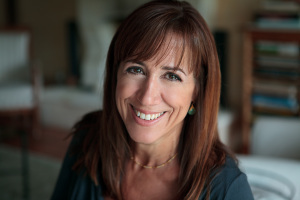 Ellen Sussman is the New York Times bestselling author of four novels, A Wedding in Provence, The Paradise Guest House, French Lessons, and On a Night Like This. She is the editor of two critically acclaimed anthologies, Bad Girls: 26 Writers Misbehave and Dirty Words: A Literary Encyclopedia of Sex. She teaches through Stanford Continuing Studies and in private classes. www.ellensussman.com
Ellen Sussman is the New York Times bestselling author of four novels, A Wedding in Provence, The Paradise Guest House, French Lessons, and On a Night Like This. She is the editor of two critically acclaimed anthologies, Bad Girls: 26 Writers Misbehave and Dirty Words: A Literary Encyclopedia of Sex. She teaches through Stanford Continuing Studies and in private classes. www.ellensussman.com
facebook: www.facebook.com/ellensussman
twitter: @ellensussman








July 9, 2014
Guest Post: Author Rita Plush Gives A Real Voice To Her Characters Through An Audio Book
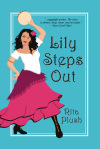 Today, author Rita Plush offers us an inside look at how she facilitated the recording of her own audio book, what that process entailed, and what it meant to her.
Today, author Rita Plush offers us an inside look at how she facilitated the recording of her own audio book, what that process entailed, and what it meant to her.
There are a myriad of paths to traditional publication today — small presses to e-publishers to big publishers. I love seeing an author take things into their own hands when it’s possible or necessary — because no one cares about the success of our book as much as we do. Kudos to Rita for finding a new way for her author voice to be heard.
Please welcome Rita back to WFW!
Amy xo
Giving Lily Her Voice: How To Let Your Reader Hear Your Characters Speak on Audio
by Rita Plush
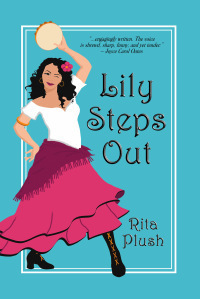 How we love to hear stories. The human voice, its richness and intonations takes us into make believe worlds.
How we love to hear stories. The human voice, its richness and intonations takes us into make believe worlds.
And I love that my book, Lily Steps Out, has stepped off the monitor screen and printed page into the listening world as an audio book. After all the work of writing (5 years) and getting Lily into print (tack on another 7), it was pure pleasure to hear my story told through my characters. And because I think my fellow Women Fiction Writers will benefit from my experience, I’m spreading the word—or words, as we writers are inclined to spread.
I learned about ACX—Audiobook Creation Exchange—owned by Amazon (isn’t everything?) from a fellow author who said the procedure of getting a print or eBook into a listening format was “pretty much painless” and she was right. This this is the gist of how I did it:
First, I checked my publishing contract to see if I owned my book’s audio rights and the cover (yes and yes). If you don’t own the cover to your book ACX will help you put one together.
Thinking that the sales of the audio might in some way effect my publisher’s royalties on print and eBook venues, I ran the idea by them. Their only concern was that Amazon might “bundle” the print or eBook version at a discounted price with the audio, thus reducing their royalty—Amazon does what it wants with its pricing regardless of the publisher or author’s viewpoint (it’s good to be the king). A call to ACX assured me that if there was “bundling” it would be the audio that would be reduced, not the print or eBook version.
That bit of business out of the way I forged ahead and decided on the first of the three royalty options ACX offers. In a nutshell here they are:
1. Royalty Share—royalty payments are shared among ACX, the author, and the narrator (referred to as Rights Holder and Producer by ACX) with ACX getting 50 per cent of the royalty and the author and narrator each getting 25 percent. This plan is at zero cost to the author.
2. Pay for Production Exclusive Distribution—the author pays the narrator a one-time fee (this fee can be negotiated) and splits the royalty with ACX who is the exclusive distributor of the audio.
3. Pay for Production Non-Exclusive Distribution is the same as far as “author pays the narrator” goes, but the author can distribute to resources other than ACX which reduces the author’s royalty.
ACX handles all distribution of royalties and pays the narrator when she has earned $50 or more each month.
Next up on my to-do list was to create a personal profile, a blurb about Lily and provide a sample passage of the book. A click of a button put me in touch with narrators on the ACX website and I invited a handful to audition. The invites, auditions, and all correspondence between author and narrator are done through ACX’s website, with an 800 number if you have questions (I had many questions).
I also had a particular voice criteria for Lily Steps Out. A kind of New-Yorkish female voice, but I also wanted a narrator who could do male; there are men in the story who have a lot to say. Did I mention funny? There’s lots of humor in Lily and I wanted a voice artist who could put that over. So female, male, New York and funny.
Three narrators auditioned a fifteen minute, contract-specified, segment.
The first narrator lacked Lily’s spirit and liveliness, so she was out. The next was an improvement, but not quite right, so I emailed my reservations, suggested changes and waited for the revision (the seven year contract provides for two revisions of the fifteen minute segment). There was barely a difference between the first and second takes, and I decided she wasn’t for me. The third narrator nailed all the voices and patterns of speech but I felt that her emphasis was off in certain passages. My email to her explained the specifics, commented on her general performance and the recording quality (that’s the author’s responsibility) which according to the contract, can still be done after the entire recording has been presented.
Sheri Puggot, the narrator I chose, had other professional commitments to satisfy before she could start on Lily, and technical glitches and communication delays between her and ACX once she did start, making the audio production take a bit longer than the ACX website specified (three to four months turned into six months). Not a big deal, as far as I was concerned. We were in a partnership, she and I, both wanting the best reading of Lily.
From sign-on to breakout date, putting Lily Steps Out on audio was a learning experience, one in which I not only mastered a process unfamiliar to me (it’s not difficult, but it is involved and it does take time) but I was able to place Lily Steps Out on a new promotional track and put another notch in my marketing belt.
 Rita Plush lives and writes in Queens, New York. Her writing practice includes both fiction and nonfiction. She is the author of Lily Steps Out (Penumbra Publishing 2012), and the short story collection, Alterations (Penumbra 2013).
Rita Plush lives and writes in Queens, New York. Her writing practice includes both fiction and nonfiction. She is the author of Lily Steps Out (Penumbra Publishing 2012), and the short story collection, Alterations (Penumbra 2013).
During her forty-year career as an interior designer, Rita was the Coordinator of the Interior Design Decorating Program in Continuing Ed. at Queensborough Community College. There, she implemented and taught several classes in the program and remains on the faculty. As a speaker, Rita has presented at libraries and synagogues, at Hofstra University and CW Post Hutton House, on topics ranging from writing and publishing, the decorative arts, interior design and “Coco Chanel ~ The Woman–The Legend”
She is the facilitator of the Self-Published Authors’ Roundtable that meets the first Tuesday of each month at the Manhasset Library, Manhasset, L.I.
http://www.ritaplush.com
http://www.facebook.com/ritaplush
Lily Steps Out: Rita Plush: 9781935563891: Amazon.com: Books








July 2, 2014
A WFW Book Review: THE STORIES WE TELL By Patti Callahan Henry

There are several reasons I wanted to read THE STORIES WE TELL by Patti Callahan Henry.
I’ve loved every book of Patti’s.
She lived in Philly until she was about 12 (so we’re technically related).
We share an editor (THE Brenda Copeland) at St. Martin’s Press (also making us technically related).
Another reason is that while steeped in editing my second novel—GASP—I didn’t read much. What better way to get back into reading than with a sure thing? That’s what you get with Patti. A sure thing. THE STORIES WE TELL did not disappoint me in any way. It’s a layered family story, it’s complex, the language is lovely, and it’s easy to read. Combining those elements is not easy though. I used to think that “easy to read” was a criticism, but have come to realize it is a compliment. When an author can sweep you away with her characters, details, dialogue, and story, that takes some SKILLZ, folks. There is depth in the delightfulness of this book. There’s hope and there’s heartache.
When I was reading THE STORIES WE TELL, I was taken by intricacies. I loved reading a story set in Savannah, Georgia, a place I’ve always wanted to go. I loved reading about a letterpress business, as I’ve always been invitation and stationary obsessed. I could see Eve’s studio that was set in an old stable. I felt like I knew her friends, her sister, her in-laws, and of course, her husband.
Secrets abound in THE STORIES WE TELL, nothing is what it seems—except where it best serves the story. There’s never a doubt that Eve loves her daughter and her sister. And there’s never a doubt the Eve is passionate about her business and career. Where Eve struggles is relatable—at least to me. What’s acceptable? What kind of lies can be tolerated? When things change do you adapt? Accept? Move on?
THE STORIES WE TELL is contemporary women’s fiction at its finest, not that that surprised me. If I gave out stars, or congratulatory cocktails, cupcakes, or fireworks, I’d give it five.
Find out more about Patti and her books on her website.








Women's Fiction Writers
- Amy Sue Nathan's profile
- 543 followers





